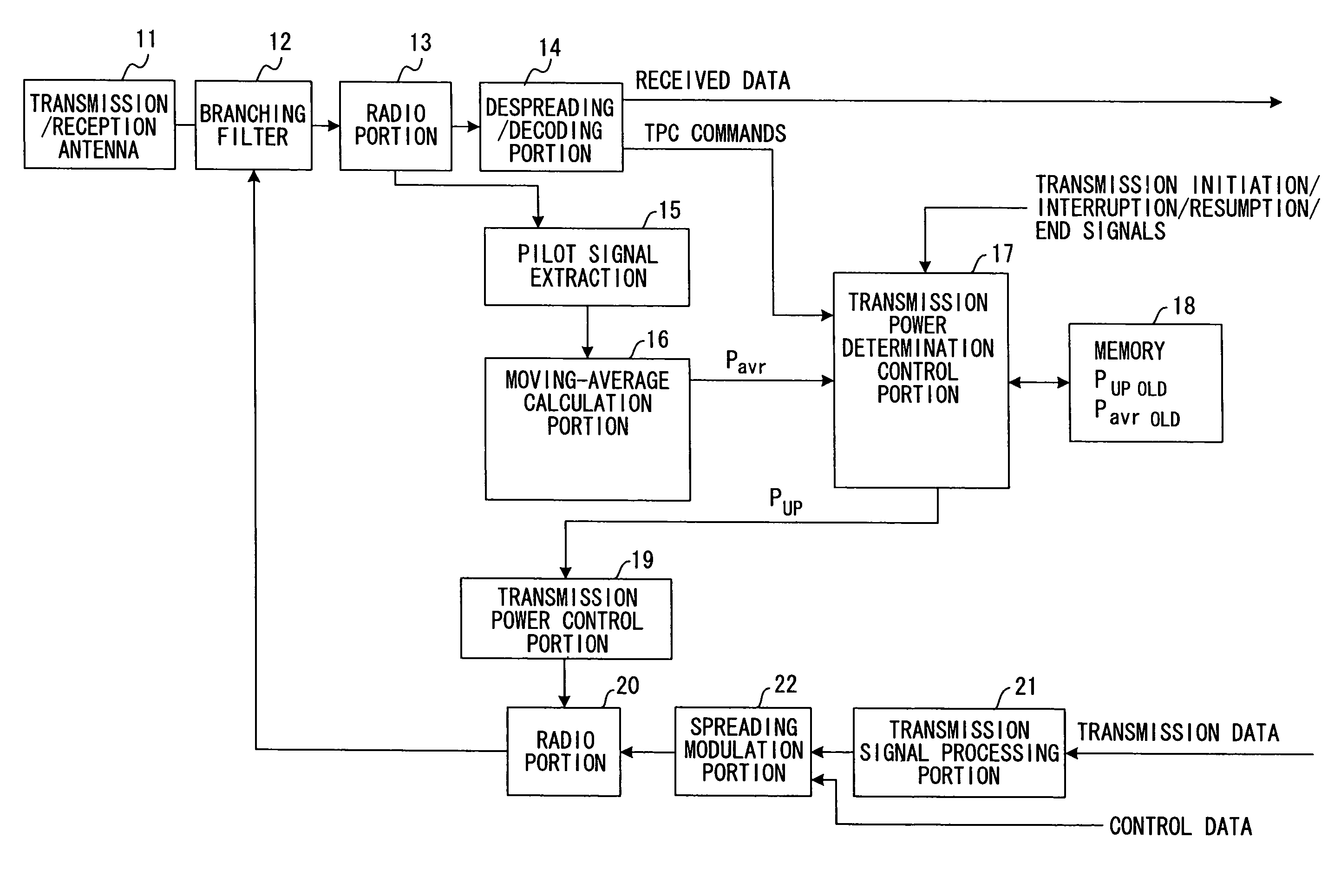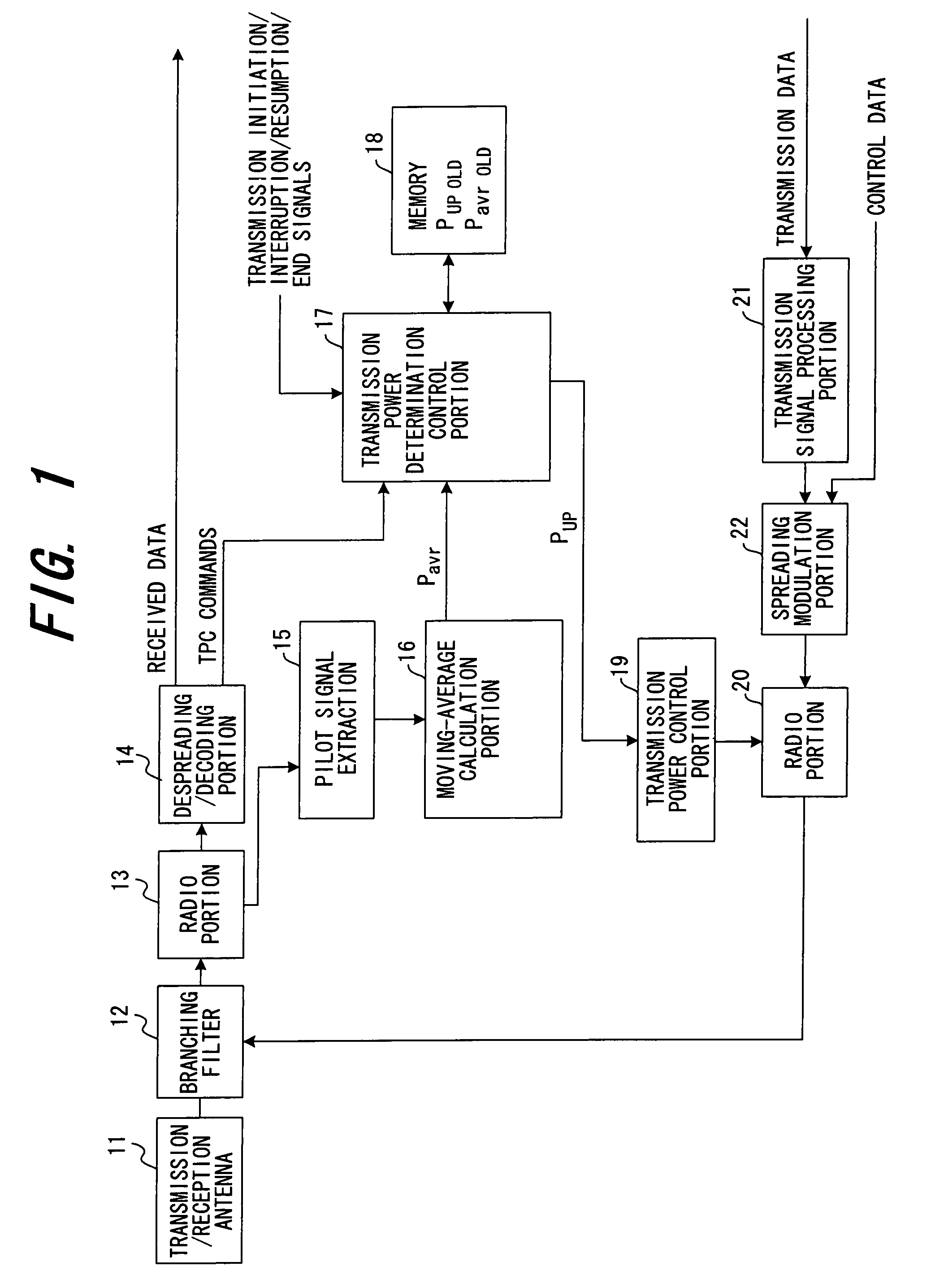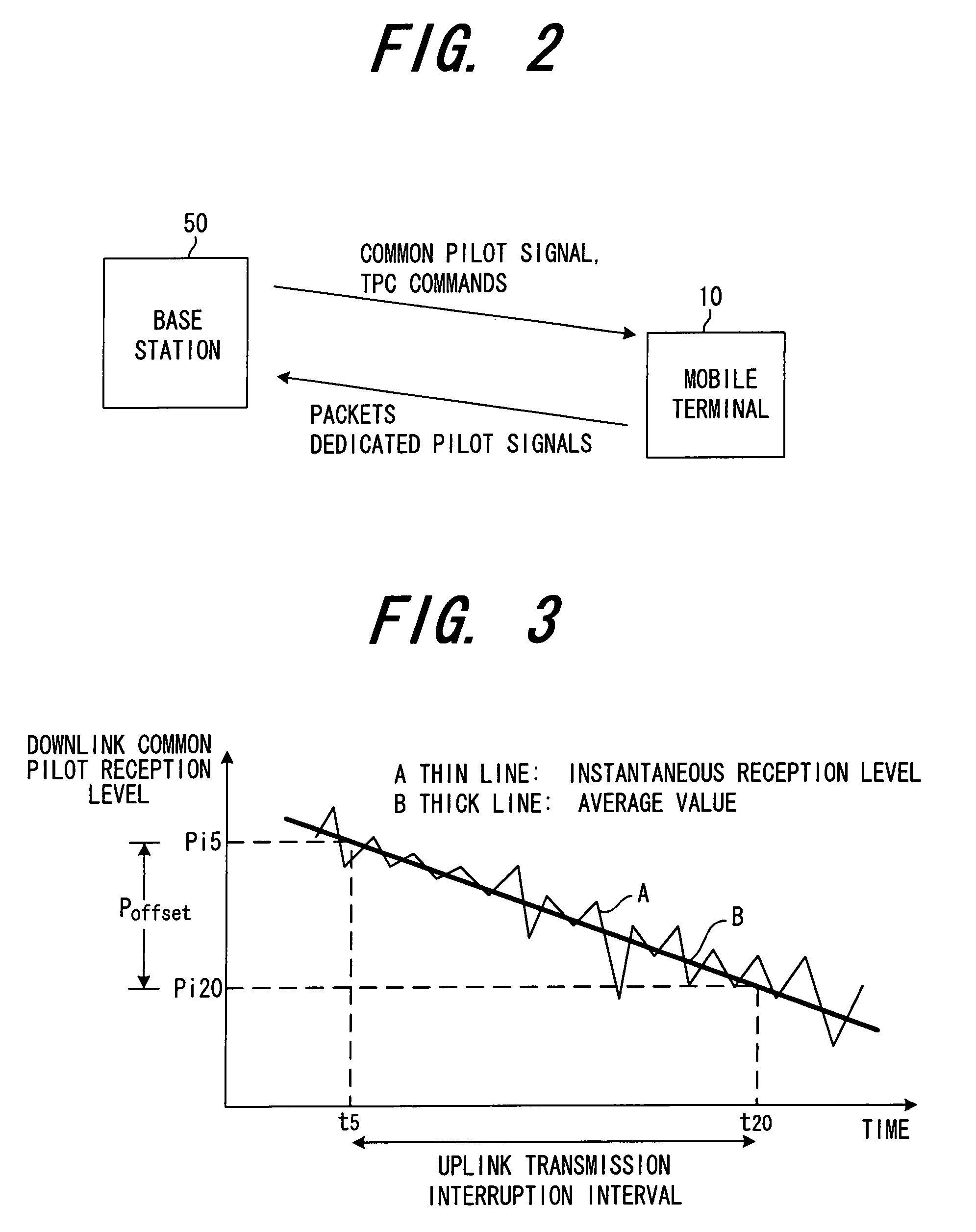Transmission power control method and mobile terminal apparatus
a technology of transmission power control and mobile terminal, applied in the direction of transmission monitoring, frequency-division multiplex, instruments, etc., can solve the problems of inability to continuously execute data packet transmission, inability to transmit signals, and inability to maintain uplink transmission power control, so as to prevent the occurrence of interference due to excessive power, the probability of correct reception of data packets, and the effect of effective utilization of radio intervals
- Summary
- Abstract
- Description
- Claims
- Application Information
AI Technical Summary
Benefits of technology
Problems solved by technology
Method used
Image
Examples
first embodiment
(A) First Embodiment
(a) Configuration
[0043]FIG. 1 shows the configuration of principal portions of a mobile terminal comprising transmission power control functions of this invention, and FIG. 2 is an explanatory diagram of uplink and downlink transmission and reception signals.
[0044]As shown in FIG. 2, similarly to the technology of the prior art in FIG. 7, the base station 50 measures reception quality based on dedicated pilot signals received from the mobile terminal 10, and creates and transmits to the mobile terminal 10, via the dedicated physical channel DPCH, TPC bits (TPC commands) at each slot, such that the measured reception quality approaches a target reception quality. In addition, the base station 50 constantly transmits a common pilot signal via the common pilot channel CPICH.
[0045]The transmission / reception antenna 11 (FIG. 1) of the mobile terminal 10 receives signals transmitted from the base station 50, and inputs the received signals to a radio portion 13 via a b...
second embodiment
(B) Second Embodiment
[0061]FIG. 5 shows the configuration of a second embodiment of the invention; portions which are the same as in the first embodiment are assigned the same symbols. A difference with the first embodiment is the fact that an UL / DL frequency ratio correction portion 31 is provided, which corrects the signal transmission power PUP at the time transmission is resumed according to the ratio of the RF signal frequency of downlink DL transmission from the base station to the mobile terminal, to the RF signal frequency of uplink UL transmission from the mobile terminal to the base station.
[0062]Even when there is a difference between the downlink DL RF signal frequency and the uplink UL RF signal frequency, if the ratio of the two frequencies is nearly equal to 1, then the moving average values Pavr of the reception levels at the base station and at the mobile terminal are substantially the same, and the transmission power at the time of transmission resumption can be de...
third embodiment
(C) Third Embodiment
[0065]FIG. 6 shows the configuration of a third embodiment of the invention; portions which are the same as in the first embodiment are assigned the same symbols. A difference with the first embodiment is the fact that the average number (number of slots) used when averaging the reception level of the common pilot signal is made variable. The fading environment (fading frequency) fluctuates according to the movement speed of the mobile terminal; the common pilot signal reception level changes greatly as the movement speed increases. Hence when the movement speed of the mobile terminal is slow, the number of slots used in calculating the moving average is reduced, and when the movement speed is fast, the number of slots used in calculating the moving average is increased.
[0066]By this means, when the movement speed is slower the number of slots used in calculating the moving average is reduced, so that accurate and responsive control is possible; and when the move...
PUM
 Login to View More
Login to View More Abstract
Description
Claims
Application Information
 Login to View More
Login to View More - R&D
- Intellectual Property
- Life Sciences
- Materials
- Tech Scout
- Unparalleled Data Quality
- Higher Quality Content
- 60% Fewer Hallucinations
Browse by: Latest US Patents, China's latest patents, Technical Efficacy Thesaurus, Application Domain, Technology Topic, Popular Technical Reports.
© 2025 PatSnap. All rights reserved.Legal|Privacy policy|Modern Slavery Act Transparency Statement|Sitemap|About US| Contact US: help@patsnap.com



